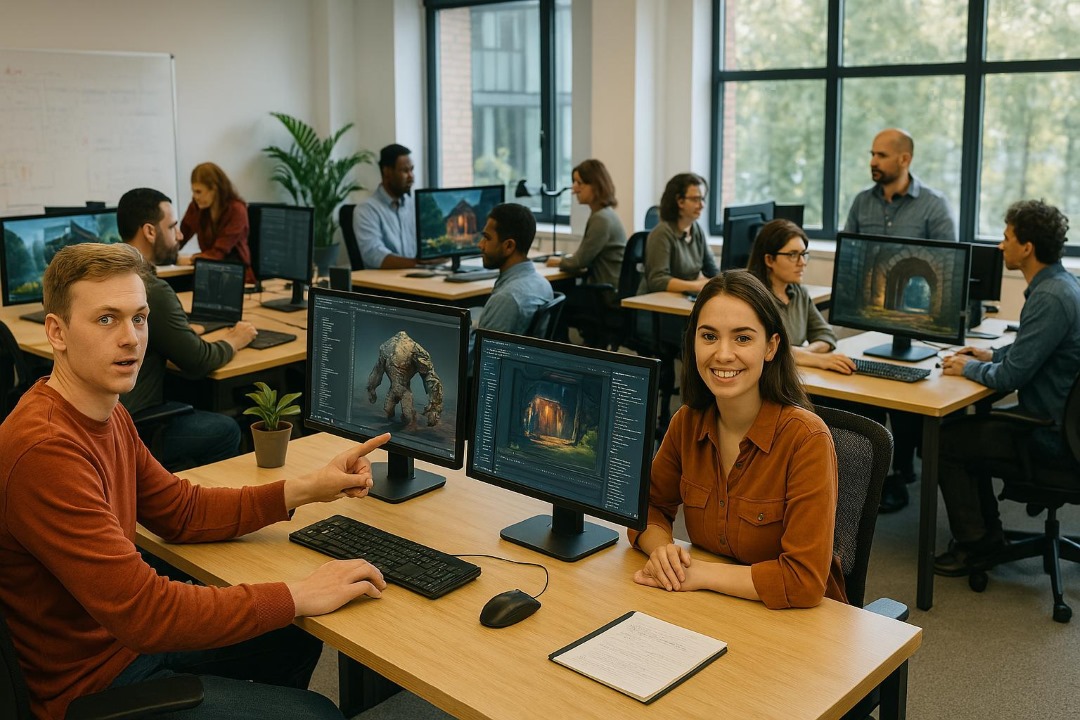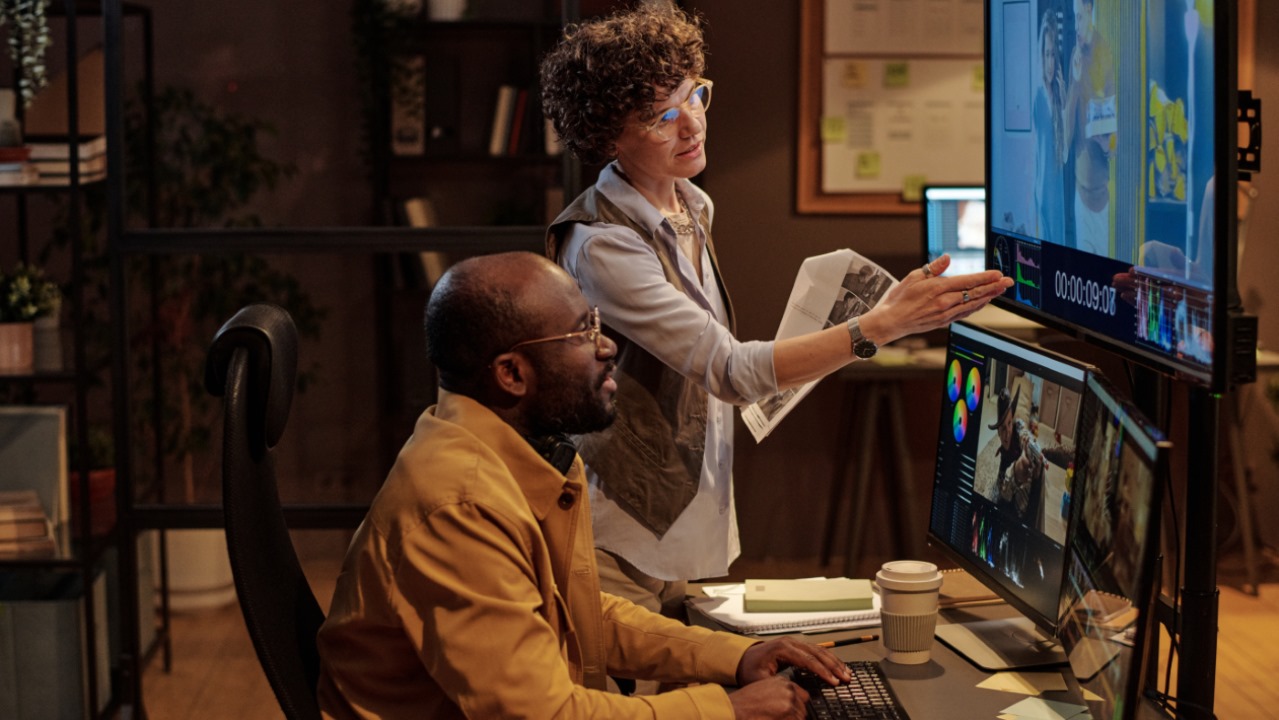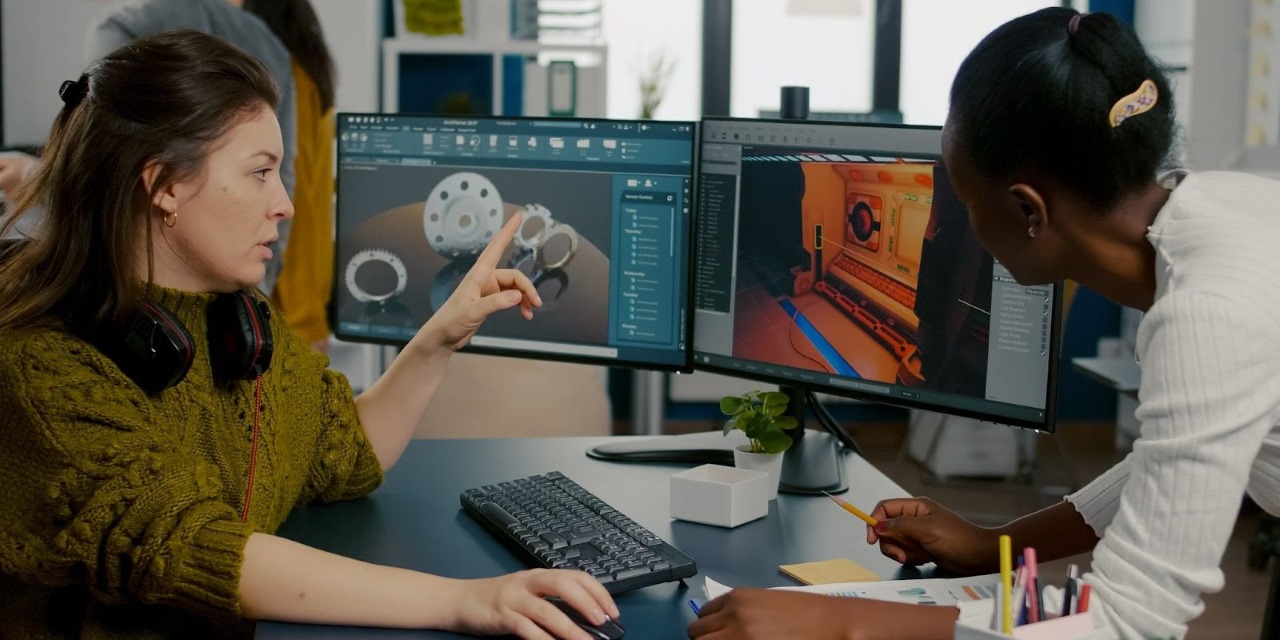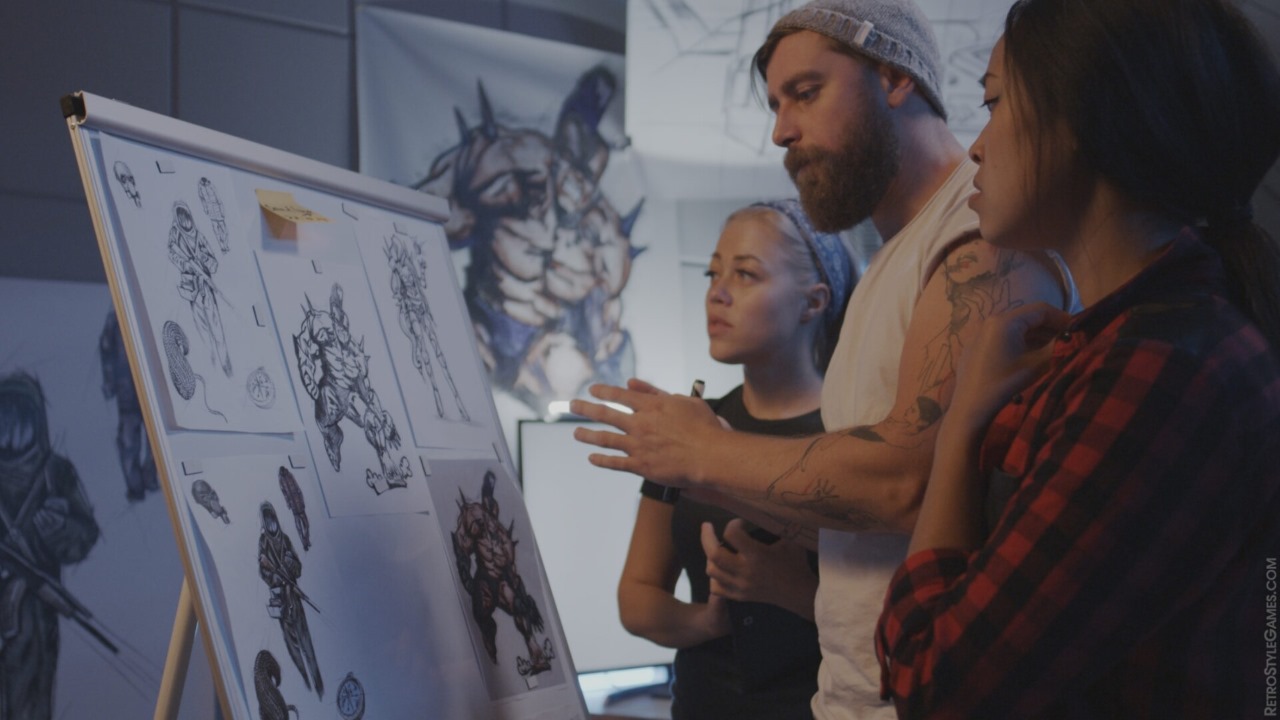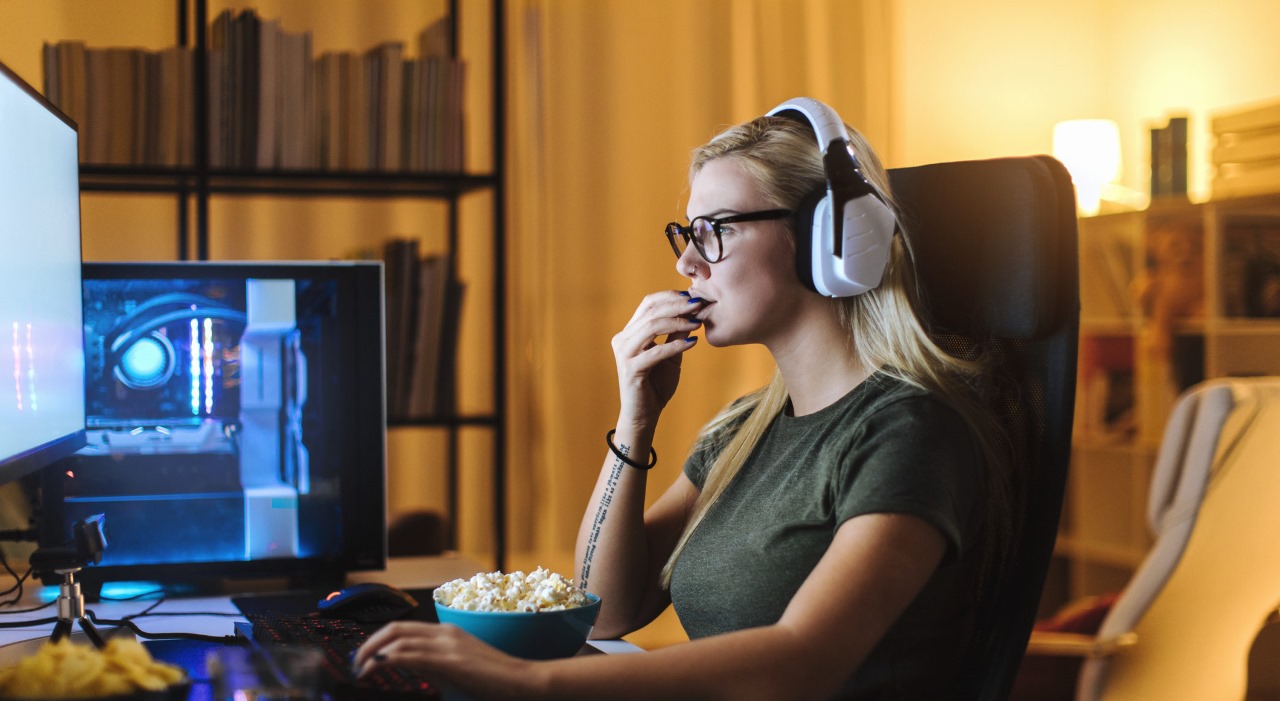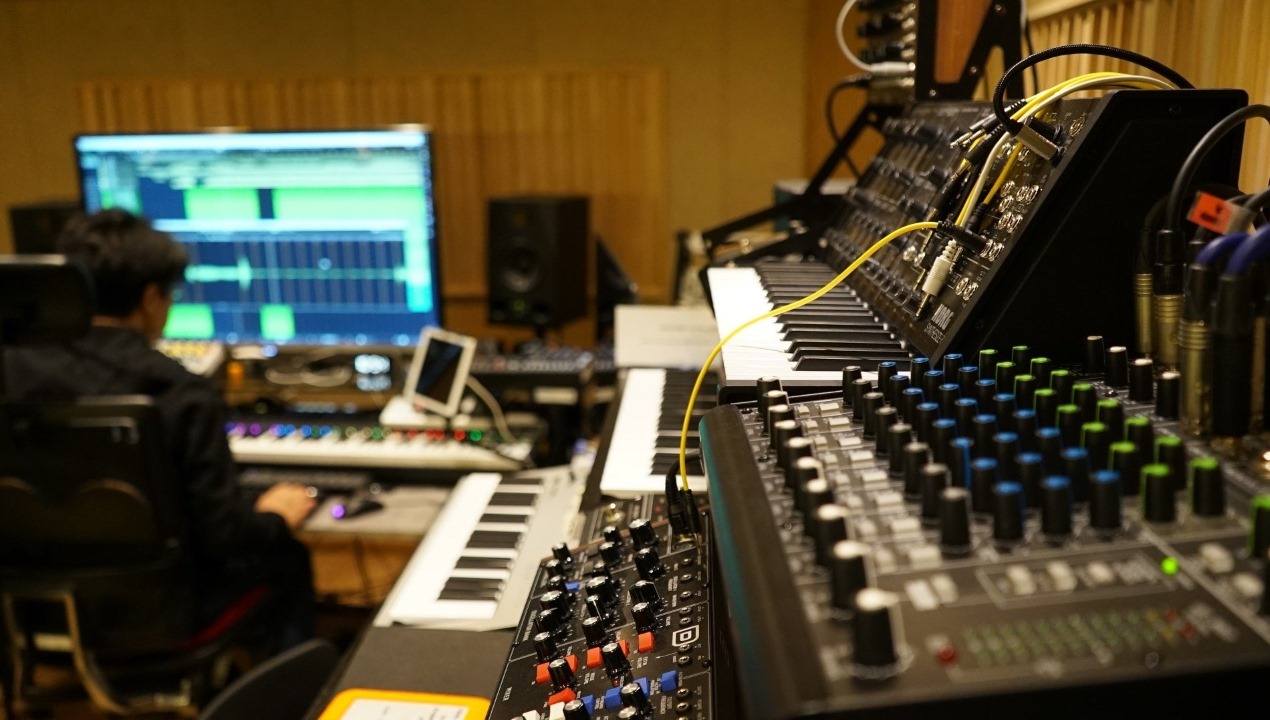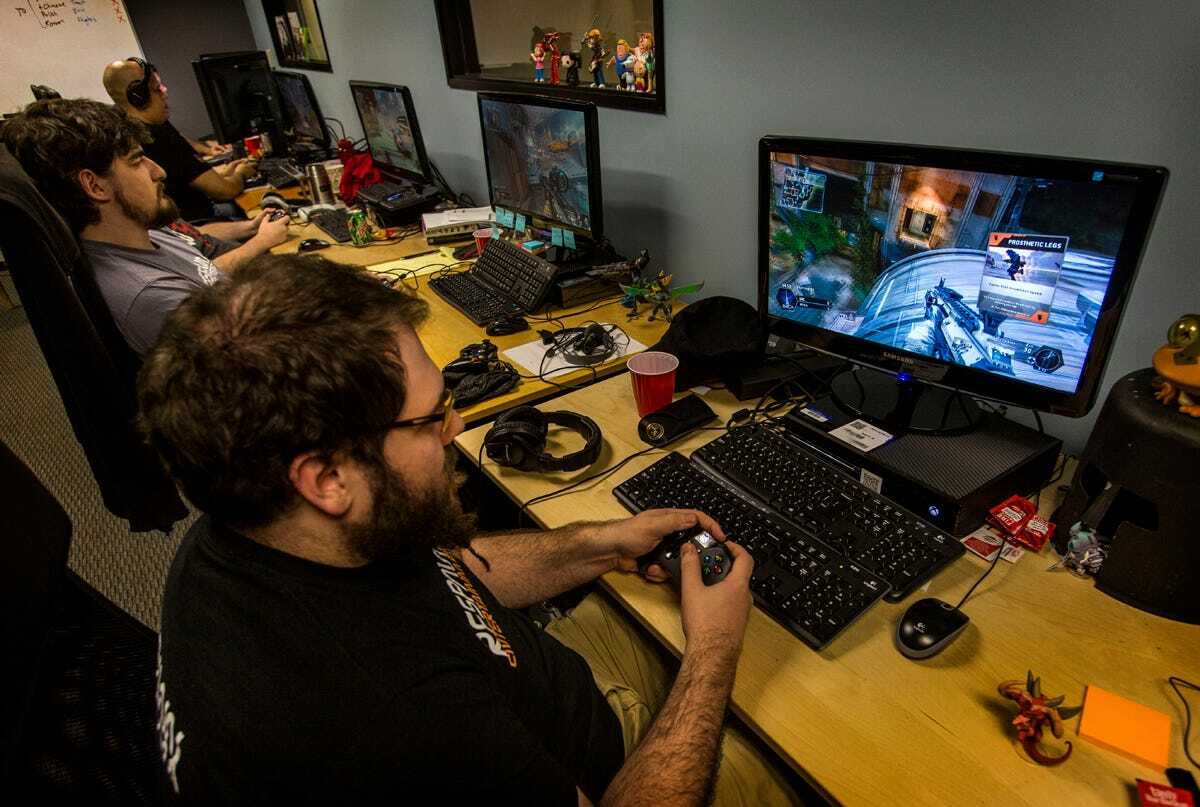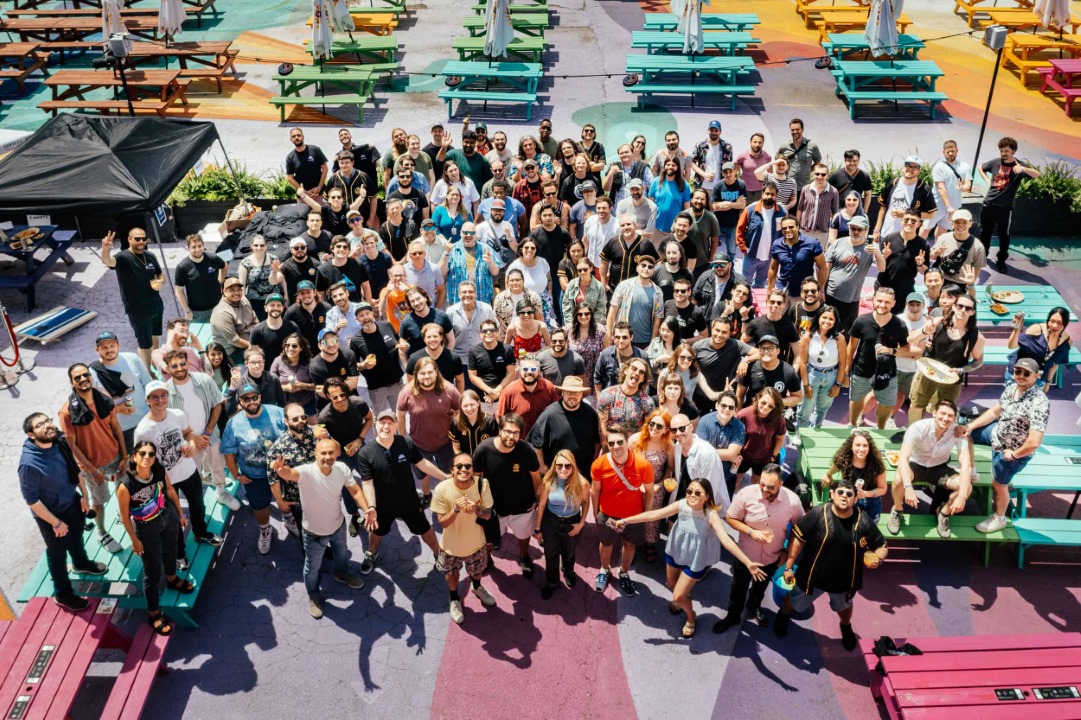AAA games—massive, cinematic, immersive titles like Resident Evil Village, God of War: Ragnarök, or Far Cry 6—don’t appear out of thin air. They’re not the work of one genius sitting in a dark room with energy drinks and dreams. These games are created by sprawling teams of highly specialized professionals, often numbering in the hundreds, and sometimes even into the thousands across multiple studios worldwide.
Creating a AAA game is more like orchestrating a film production, software company, digital art studio, and theater troupe—all rolled into one. It’s a long, complex process that involves rigorous coordination, creativity, and technical expertise. Every pixel you see, every sound you hear, every animation, mechanic, and decision point in these blockbuster games is the result of deliberate work from someone on the team.
But who exactly are these people? What do they actually do? What roles are essential behind the scenes of a high-end game? In this article, we’ll break down the structure of a professional game development studio, from production leads to QA testers, and explain in clear terms how each role contributes to the final masterpiece.
Whether you’re curious about how your favorite titles are made, dreaming of joining the industry, or building your own indie team, this guide will walk you through the job titles, team structures, and duties that bring AAA worlds to life.
The Production Team
In any AAA studio, the production team functions as the glue that holds everything together. They aren’t designing levels or animating characters, but without them, the entire project risks becoming chaos. Think of producers and project managers as the game’s real-life quest givers: setting milestones, tracking tasks, and ensuring every department stays aligned.
Producer
The producer is essentially the game’s project lead—managing scope, deadlines, budgets, and communication across departments. On a AAA game, there might be multiple producers: one for gameplay, one for narrative, another for audio or tech. They work with stakeholders to define what the game should be and then constantly track whether the team is hitting its targets.
A producer is a problem-solver. If an animation pipeline is delayed or QA finds a game-breaking bug right before launch, the producer coordinates the fix, adjusts the roadmap, and keeps morale intact. They run team meetings (called standups), manage sprints, and update production schedules, often using tools like JIRA or Confluence.
Good producers don’t just manage—they inspire. They keep the team focused, resolve conflicts, and remove blockers that prevent progress. On larger teams, senior producers may handle high-level planning, while associate producers take care of daily task tracking.
Project Manager
Closely related but more task-focused, the project manager ensures the nitty-gritty logistics run smoothly. They handle scheduling, budget breakdowns, external vendor communication, documentation, and release timelines. In many studios, the PM works closely with the producer but focuses more on execution than vision.
They might coordinate translation/localization with overseas teams, schedule motion capture sessions, or build out timelines for voice acting deadlines. They’re the ones watching the calendar like a hawk, making sure everything lines up—so the team can focus on creativity without missing deliverables.
Without a strong production team, even the most talented developers would spiral into feature creep, burnout, or delays. In the world of AAA development, staying organized is half the battle.
The Design Team
If the production team sets the tempo, the design team writes the melody. Game designers are the architects of the player’s experience—they define how the game plays, feels, and challenges you. From combat mechanics to puzzle systems, from the way menus work to the flow of a boss battle, it’s all in the designers’ hands.
Game Designer
The game designer is responsible for the core gameplay systems—mechanics, pacing, rules, and balance. In a shooter like Far Cry, this might mean designing gun recoil, stealth AI, or how enemies react to noise. In a survival horror game like Resident Evil, it’s about inventory systems, fear pacing, and enemy placement.
Game designers write detailed design documents that outline every aspect of the player experience. These docs get passed to programmers, artists, and QA testers so everyone understands how a mechanic should behave. Designers also prototype new ideas using development tools, tweak values (like damage numbers or movement speed), and test how mechanics feel moment to moment.
There are often different types of game designers: combat designers, systems designers, narrative designers, and even economy designers. In AAA games, each of these roles may be held by a separate specialist.
Level Designer
Level designers take the game mechanics and bring them to life within the game world. They build environments that challenge the player, guide exploration, and control pacing. In Resident Evil, a level designer might carefully construct a mansion’s layout so that tension builds slowly, with tight corridors, locked doors, and strategic enemy placement.
Level designers work closely with environment artists and narrative teams to ensure that gameplay flows naturally through each area. They also test levels over and over—looking for exploits, frustration points, or unintended shortcuts.
Tools like Unreal Engine or proprietary level editors are used to "greybox" levels—meaning early versions with simple geometry. Once gameplay is solid, artists come in and detail the space. It’s a collaborative process that blends creative storytelling with mechanical design.
Game and level designers are the reason your experience feels tight, engaging, and meaningful. Their work often goes unnoticed by players—which is a sign they’re doing it right.
The Art Team
The visual experience of a game—the characters, the environments, the lighting, the user interface—starts with the art team. They turn abstract ideas and scripts into living, breathing worlds. In a visually-driven AAA title, the art team can be as large as the programming department.
Art Director
The art director sets the tone. They establish the game’s visual identity, referencing mood boards, style guides, and concept art. Are we going for gritty realism like The Last of Us or stylized fantasy like Horizon Forbidden West? The art director decides and ensures consistency across characters, environments, menus, and effects.
They review assets submitted by concept artists, 3D modelers, UI designers, and more—ensuring that everything matches the game’s tone and direction. They're also the visual liaison with narrative and design teams.
Concept Artist
Before a 3D model is built, before a single environment is rendered, concept artists bring the world to life through illustrations. Their job is to visualize ideas—from characters and costumes to monsters, weapons, and architecture.
Concept art guides the 3D team. If the creative director wants a new biome that mixes rainforest and alien technology, the concept artist translates that vision into visuals. These artists need strong imagination, deep art fundamentals, and an understanding of mood, scale, and function.
3D Modeler
3D modelers take the concept art and create full 3D representations in tools like Blender, Maya, or ZBrush. Whether it’s a towering building or the hinge on a character’s backpack, modelers sculpt it all.
There are usually multiple types: environment artists for worlds, character artists for people and creatures, and prop artists for objects. After modeling, assets go through optimization for game performance—so they not only look great but run smoothly in real time.
Animator
Once models are built, animators breathe life into them. They rig characters with skeletons, define movement cycles, and create all the little touches that make a scene feel alive—like facial expressions, limb movement, or idle stances.
In AAA games, this also involves motion capture. Animators clean up and edit mocap data recorded by actors to ensure it fits the character rig and environment perfectly.
They work closely with gameplay programmers to ensure that animations blend smoothly with mechanics—so your sprint doesn’t look like a slide or your jump lands correctly on slopes.
UI/UX Designer
A game can be visually stunning and mechanically sound, but if the menus are a mess or the interface is hard to read, players will notice—and not in a good way. That’s where the UI/UX designers come in. They’re responsible for how players interact with the game, from navigating inventory screens to understanding health bars and tooltips.
UI (User Interface) designers focus on visual elements like HUDs (heads-up displays), menus, map screens, and icons. In a complex AAA game like Far Cry, that includes dozens of weapon icons, skill trees, mission indicators, and on-screen prompts—all of which must be readable at a glance.
UX (User Experience) designers look deeper. They ask: Is the interface intuitive? Do players understand where to go next? Is the skill tree overwhelming or encouraging? They conduct playtests, analyze user behavior, and work closely with both artists and programmers to refine the flow.
AAA games often have full UI/UX departments. Some specialize in controller layout, others on accessibility options (like colorblind modes or font scaling), and some even focus on immersive UI that blends into the game world (e.g., in-world holograms instead of static menus).
A strong UI/UX team ensures that players spend more time immersed in gameplay and less time fighting the interface.
The Programming Team
Behind every visual effect, every enemy AI, every line of dialogue or footstep sound—there’s code. The programming team is the beating heart of a AAA game’s engine and mechanics. They take the ideas from designers, the assets from artists, and the input from players—and make everything actually work.
Lead Programmer
At the top of the programming department is the lead programmer, who oversees the technical direction of the project. They set the structure for the game’s codebase, manage the programming team, and decide which tools and technologies will be used.
They’re also the bridge between departments. If an artist wants dynamic lighting, or a designer needs a custom behavior tree, the lead programmer makes sure it’s technically feasible and assigns the right team members to build it.
Gameplay Programmer
Gameplay programmers are the architects of interactivity. They build everything the player can do—running, jumping, shooting, crafting, interacting, using inventory items, and more.
They work closely with game designers to implement features, test them, and adjust them based on feedback. For example, if a stealth mechanic feels clunky or overpowered, the gameplay programmer will tweak enemy vision cones or player movement speeds to balance it out.
AI Programmer
The AI programmer handles the brains behind NPCs (non-player characters). In a shooter, they write code that makes enemies flank, retreat, or use cover. In a horror game, they might create stalker behaviors that adapt to how the player hides.
Good AI is reactive but not predictable. It must be challenging without feeling unfair—and creating that balance is one of the hardest tasks in game programming.
Graphics Programmer
If the art team creates the visuals, the graphics programmer makes sure they display correctly—and beautifully. They write shaders, optimize rendering, and develop lighting systems, particle effects, and post-processing filters.
Modern AAA games push graphical boundaries constantly. Real-time ray tracing, dynamic weather, global illumination—all of this is handled or fine-tuned by graphics programmers. They work deep within the engine and often collaborate with hardware partners (like NVIDIA or AMD) for optimal performance.
Network Programmer
Online play adds another layer of complexity, and that’s where network programmers come in. They build the systems that allow multiplayer games to sync between players, handle latency, match players, and keep things fair.
They’re responsible for lobby systems, anti-cheat measures, cloud saves, matchmaking algorithms, and more. AAA titles with co-op, PvP, or live service features rely heavily on this role.
Physics Programmer
Realistic movement and interaction depend on physics programmers. They implement and refine how objects move, collide, fall, bounce, or break. If a wooden crate rolls believably down a hill or a grenade sends enemies flying just right, thank the physics team.
They also handle ragdoll systems, environmental destruction, and vehicle handling—elements that demand both precision and performance optimization.
Tools Programmer
Finally, the unsung heroes of AAA development: tools programmers. These devs build internal software that the rest of the team uses every day. That might include level editors, asset management systems, animation pipeline tools, or even bug tracking dashboards.
Their goal is to make everyone else faster and more efficient. Great tools save thousands of hours across a project’s lifespan—and in many cases, determine how polished and feature-rich the final game can be.
The Audio Team
Sound is often the invisible glue that makes a game feel real. The audio team gives voice to the world—through music, effects, ambience, and dialogue. In a game like Resident Evil, where atmosphere is everything, the audio team is critical to setting the tone.
Sound Designer
Sound designers create everything from the creak of a door to the roar of an explosion. They source or record raw audio, then manipulate and layer it using software like Reaper, Pro Tools, or FMOD to create immersive, interactive effects.
Sound designers also use adaptive audio techniques. For instance, background music might swell during combat or shift to eerie silence in a suspenseful hallway. These dynamic systems are created through event triggers connected to gameplay.
They work closely with designers to make sure every action is accompanied by satisfying audio feedback, and they fine-tune sounds for realism, tone, and emotional impact.
Composer
The composer writes the game’s original soundtrack. In a AAA title, this score can be as extensive and layered as a Hollywood film. Composers work from story outlines, gameplay demos, and concept art to craft music that reflects the pacing and mood of each scene.
Dynamic scores that adapt to player choices or progression are becoming standard, meaning the composer often collaborates with sound designers and audio programmers to implement musical layering and real-time transitions.
Audio Programmer
The audio programmer is the technical bridge between the creative team and the game engine. They integrate audio assets, build logic for dynamic sound playback, and ensure that audio files are compressed and optimized for performance.
They might also develop audio mixing systems, control how music transitions between states (like exploration vs. combat), and troubleshoot bugs like audio cutting out during intense scenes.
Without the audio team, the world of a AAA game would feel sterile, empty, and disconnected—no matter how good it looked.
The Quality Assurance (QA) Team
Even the most brilliant game design and state-of-the-art programming can be rendered useless by a single game-breaking bug. Enter the Quality Assurance (QA) team, often the unsung heroes of AAA development. These are the people who spend months—sometimes years—playing the same game over and over, trying to break it, stress it, and ultimately ensure it's ready for players.
QA Tester
QA testers (also called game testers or functionality testers) are the frontline. Their job isn’t just to play the game—it’s to find every flaw, from tiny graphical glitches to progress-halting bugs. They test menus, combat systems, save/load features, and every possible interaction, often across multiple platforms (PC, PlayStation, Xbox, etc.).
Testers follow test cases—structured tasks that must be verified—like “Open the inventory 50 times in a row,” or “Try to skip the cutscene and fire a weapon simultaneously.” But they also do ad-hoc testing, which involves exploratory play to uncover issues no one planned for.
They document every bug in detailed reports, often including steps to reproduce, severity ratings, screenshots or video captures, and suggestions for reproduction conditions.
Great testers think like players and developers at the same time—catching both what feels wrong and what technically fails.
QA Lead
The QA lead manages the testing team. They assign coverage areas, prioritize bug lists, and act as the liaison between QA and the rest of the studio. The lead decides when a build is ready for testing, sets the standards for reporting, and often participates in milestone meetings to advocate for the QA team’s findings.
In the last few months before launch—when the infamous “crunch” period often begins—QA is one of the most active departments in the studio. They ensure that the final product isn’t just fun, but also stable, functional, and polished.
Some QA testers later transition into design, production, or technical roles, having developed a deep understanding of game systems from the inside out.
Additional (But Essential) Roles
While designers, artists, programmers, and testers make up the core of a development team, AAA games require many additional specialists to deliver the full experience. These roles may not always be visible in the credits crawl, but without them, games like Far Cry or Resident Evil wouldn't reach the level of quality we now expect.
Writer
A game writer doesn’t just write dialogue—they build the emotional and narrative structure of the entire game. They craft character arcs, backstories, world lore, and plot progression. In games with branching choices or moral consequences, the writer also maps out dialogue trees and cause/effect chains.
AAA writers work with narrative designers, level designers, voice directors, and localization teams to ensure every line of text or spoken dialogue fits the story, tone, and pacing of the game. Some studios have multiple writers, each assigned to characters, side quests, or codex entries.
Games like The Witcher 3 or The Last of Us show just how cinematic and emotionally powerful writing in games has become. It’s no longer a side detail—it’s a pillar.
Technical Artist
The technical artist bridges the gap between art and code. Their job is to ensure that all the beautiful 3D models, animations, and effects actually work within the engine and run smoothly.
They optimize assets, create shaders, manage pipelines, and help solve visual bugs. For example, if an environment causes frame rate drops due to too many polygons or poorly managed lighting, the tech artist steps in to troubleshoot.
They also create custom tools for the art team, making it easier to import and manage assets. In games that push graphical limits, tech artists are indispensable.
Localization Team
AAA games often launch in 10+ languages across multiple regions. The localization team translates dialogue, in-game text, UI elements, and marketing materials. But they do more than translate—they adapt the content culturally, ensuring jokes, idioms, and themes make sense to players worldwide.
They also work with voice localization teams to cast and direct actors in different languages, syncing lip movements and emotional delivery.
Poor localization can ruin immersion; great localization makes the game feel native to every audience.
Marketing Manager
Before a single screenshot hits social media, marketing managers are working behind the scenes. They plan the game’s launch strategy, coordinate with press outlets, manage ad campaigns, and create buzz leading up to release.
They work with influencers, produce trailers, set up game previews, and liaise with platforms like Steam, PlayStation Store, and Xbox Marketplace for visibility. In today’s industry, marketing can make or break even a well-made game.
Many AAA marketing teams also handle merchandise, collector’s editions, pre-order bonuses, and launch events. It’s a full-scale operation, not just social media posts.
Community Manager
Once the game is out in the world, the community manager becomes its public face. They interact with players on forums, Discord, Twitter/X, and other platforms—gathering feedback, answering questions, and smoothing out backlash when bugs or delays happen.
They also work closely with developers and marketing to communicate updates, patch notes, and roadmaps. A great community manager is empathetic, fast-thinking, and deeply plugged into gaming culture.
Their presence helps build loyal fanbases—and in the case of live-service games, can determine long-term player retention.
The People Who Make It Happen
The next time you play a AAA game and marvel at its scale, remember this: you’re not just playing a story, you’re experiencing the result of hundreds of professionals, each contributing their own layer of brilliance, dedication, and craft. From the subtle lighting in a foggy alley to the tension in a soundtrack crescendo, from the feel of a perfect headshot to the writing in a journal entry—it’s all intentional. All designed. All built by teams who care deeply about the experience you’re having.
Understanding what it takes to make these games doesn’t just reveal the complexity of the industry—it deepens your appreciation as a player, creator, or future developer. Because every loading screen, cinematic, enemy AI behavior, and control prompt you encounter? Someone made that happen—and it took a village.

